To quickly recover from post-workout soreness, implement these essential strategies: Stay properly hydrated, perform an active cool-down, use foam rolling techniques, try contrast therapy, consume protein-rich nutrition, wear compression gear, practice stretching, engage in massage or self-myofascial release, and take Epsom salt baths. Each method targets different aspects of recovery, from reducing inflammation to promoting muscle repair. Proper hydration and nutrition are essential, while techniques like foam rolling and stretching help alleviate muscle tension. Compression gear can improve circulation, and Epsom salt baths offer relaxation benefits. By incorporating these strategies, you'll enhance your recovery process and potentially boost your overall fitness results. Exploring these methods further can reveal even more benefits for your post-workout routine.
Core Insight
- Hydrate properly with water and electrolytes before, during, and after exercise to support muscle recovery.
- Perform an active cool-down with light activities and gentle stretching to reduce muscle tension.
- Use foam rolling techniques on large muscle groups to alleviate soreness and improve flexibility.
- Apply contrast therapy by alternating hot and cold treatments to reduce inflammation and swelling.
- Consume protein-rich foods or supplements within 30 minutes post-workout to aid muscle repair.
Proper Hydration

Drinking water is essential for recovering after a workout. Sweating during exercise causes fluid loss, which can make you dehydrated. To prevent this, drink water before, during, and after exercising. Aim for 16-20 ounces of water in the two hours post-workout. Consider adding electrolyte powders to your water to replace lost fluids and minerals quickly, helping you recover faster and perform better.
Plain water isn't your only option. Adding electrolytes to your post-workout drink is a good idea, especially after an intense or long session. Electrolytes help balance the minerals in your body that you lose through sweat.
Active Cool-Down
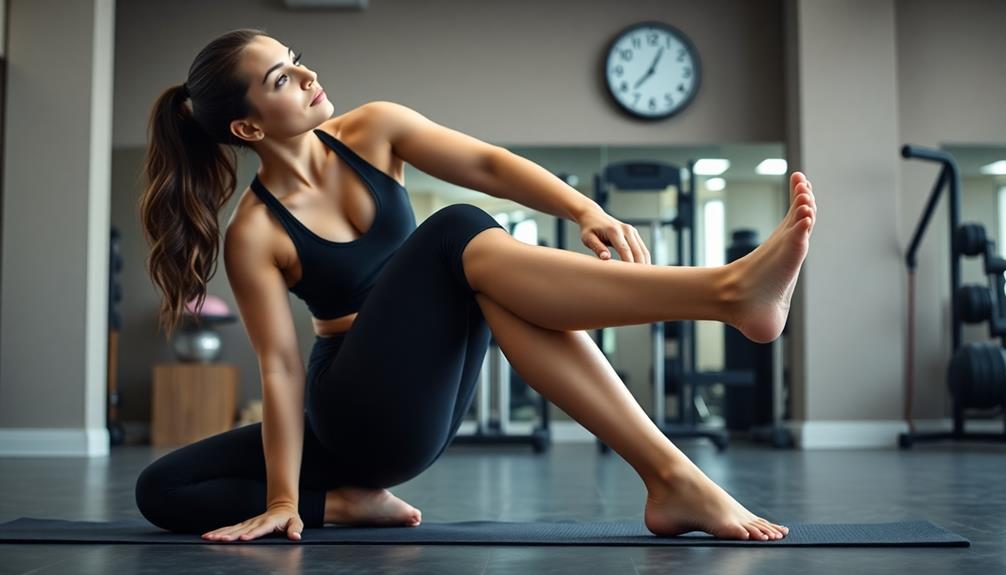
An active cool-down is a key part of your post-workout routine. It helps your body recover from intense exercise and return to a resting state. This reduces muscle soreness and improves blood flow. After your workout, spend 5-10 minutes doing light activities like walking, gentle stretching, or slow jogging. This lets your heart rate and breathing slowly go back to normal. It also helps remove waste products from your muscles. Using cooling towels during your cool-down can give extra relief and help control your body temperature better.
For the best active cool-down:
- Pay attention to how your body feels
- Breathe deeply and steadily
- Gently stretch the muscles you used
- Drink plenty of water during the process
Foam Rolling
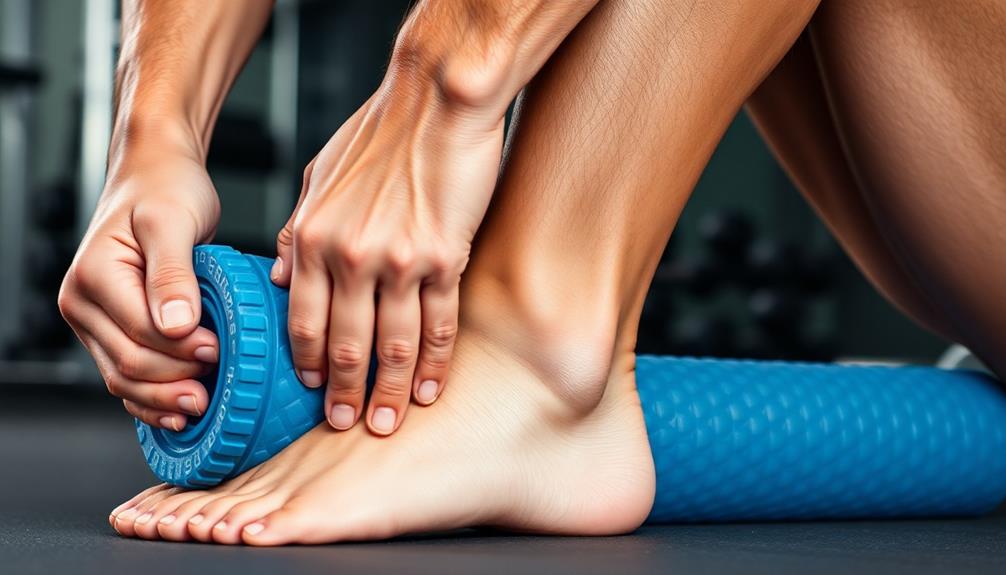
Foam rolling is a great way to ease sore muscles after a workout. It's like giving yourself a deep tissue massage. Here's a simple guide to get you started:
- Focus on large muscles first, such as your thighs, hamstrings, and back.
- Go slow, spending about 30-60 seconds on each muscle group.
- When you find a sore spot, stop and apply pressure for 10-30 seconds.
- Take deep breaths and try to relax as you press into the sore area.
- Slowly increase the pressure as your muscles start to loosen up.
To get the most out of foam rolling, use a high-density roller. These firm rollers are made from strong, non-toxic materials. They let you apply more pressure to really work out those stubborn knots.
Take your time with foam rolling. Go slow and pay attention to how your body feels. It might be a bit uncomfortable at first, but you should feel more flexible and less sore afterwards. Try to foam roll regularly after your workouts for the best results.
Contrast Therapy

Contrast therapy is a great way to help your whole body recover after a workout. It works by switching between hot and cold treatments, which can reduce swelling and improve blood flow. The basic idea is to start with heat for about 3-5 minutes, then switch to cold for 1-2 minutes. You'll repeat this process a few times.
Using contrast therapy along with foam rolling can be a powerful combo for recovery. Foam rolling targets specific muscles, while contrast therapy helps your entire body feel better.
Contrast therapy is especially good for:
- Loosening tight, sore muscles
- Reducing muscle soreness that shows up a day or two after your workout
- Boosting blood circulation to tired muscles
- Helping you recover faster overall
You can try contrast therapy at home by taking a hot shower followed by a cold bath or using ice packs. For specific problem areas, you can also use hot and cold packs. Just remember to always finish with cold to keep swelling down. As with any recovery method, pay attention to how your body responds and make changes if needed.
Protein-Rich Post-Workout Nutrition
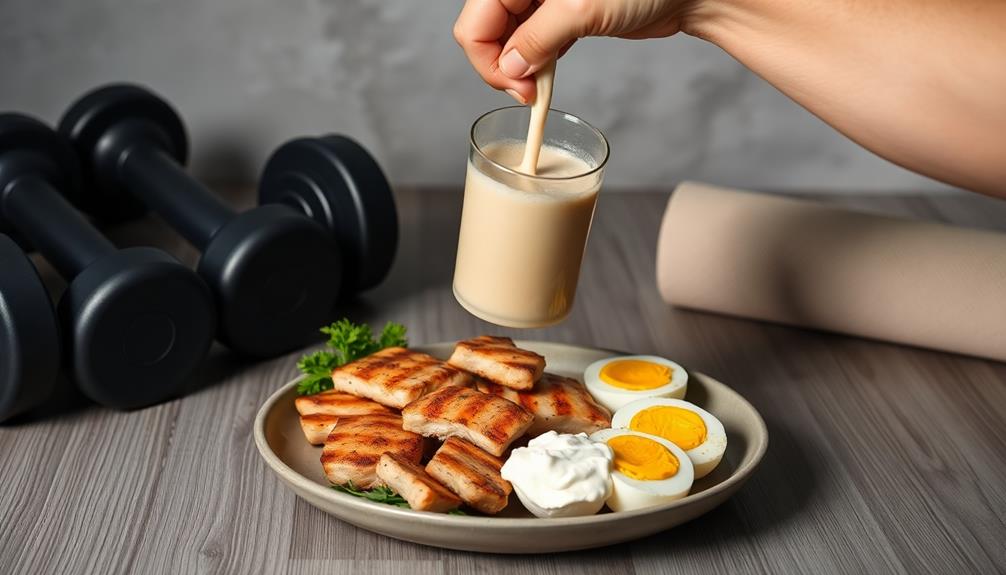
Eating protein after a workout is key for building muscle. Aim for 20-30 grams of protein within 30 minutes of finishing your workout. Good sources include lean meats, eggs, dairy, tofu, and legumes. Whey protein powders are also great options, with 24-25 grams of protein per serving and muscle-building BCAAs.
Don't forget to eat complex carbs like whole grains, fruits, and veggies to refuel your body's energy stores. And make sure to drink plenty of water to keep your muscles hydrated.
Adding foods that fight inflammation, such as berries, leafy greens, or fatty fish, can help reduce soreness and speed up recovery. This way, you can get back to your workouts sooner.
Quality Sleep

Quality sleep is key for recovering after a workout. When you sleep, your body:
- Fixes muscle tissue
- Refills energy stores
- Balances hormones
Try to get 7-9 hours of sleep each night. Make your bedroom a good place for sleep:
- Keep it cool
- Make it dark
- Keep it quiet
Go to bed at the same time each night. This tells your body it's time to relax. Herbs like lavender or chamomile can help you relax and sleep better. They're good options if you have trouble sleeping after hard workouts.
To sleep better and recover well:
- Stay off screens for an hour before bed
- Don't have caffeine later in the day
- Try deep breathing or meditation to relax
- Get a comfy mattress and pillows
Compression Gear

Compression gear can speed up your post-workout recovery. This special clothing squeezes certain parts of your body. It helps your blood flow better and makes your muscles less sore. Compression gear is good for you in a few ways:
| Benefits | How It Works |
|---|---|
| Less swelling | Boosts blood flow |
| Quicker recovery | Lowers muscle shaking |
| Better performance | Gets more oxygen to muscles |
When you pick compression gear, think about:
- Fit: Snug but not too tight
- Material: Fabric that pulls sweat away
- Purpose: Gear made for what you do
You can find compression socks, sleeves, and suits that cover your whole body. They're not magic, but many athletes like them a lot. Try using compression gear after your workouts. See if it helps you feel better.
Stretching Techniques
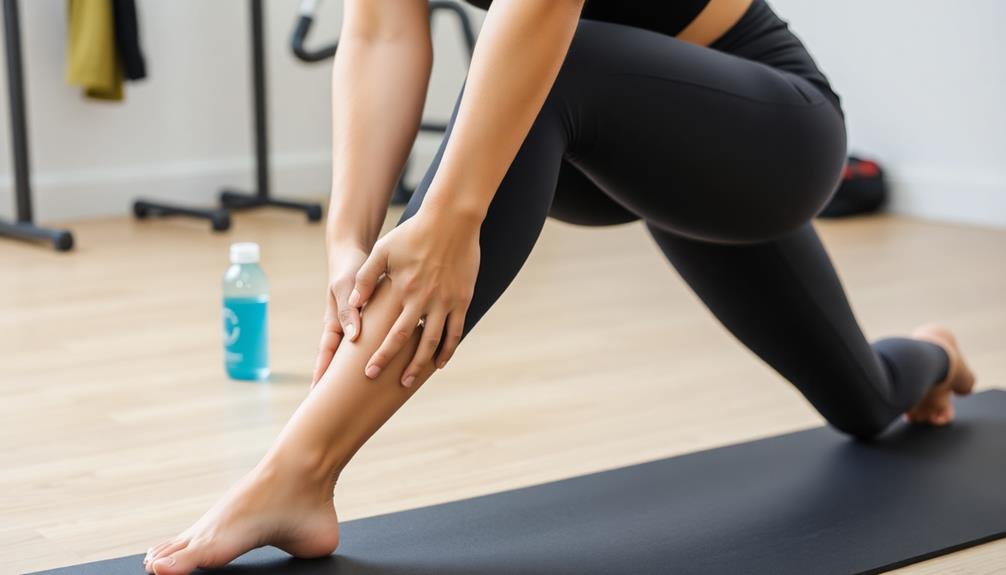
Stretching after a workout can help reduce soreness and speed up recovery. Focus on the muscles you just worked out. Hold each stretch for 15-30 seconds and breathe deeply. Don't bounce or push too hard. Just ease into the stretch. Foam rolling can also help your muscles recover and become more flexible. It targets specific areas and loosens up tight spots.
Stretching after exercise has four main benefits:
- Makes you more flexible
- Relaxes tense muscles
- Improves blood flow to muscles
- Helps prevent future injuries
Do both static and dynamic stretches. Static stretches are held in one position. Dynamic stretches involve moving. Start with big muscle groups, then do smaller ones. If you're not sure how to stretch right, ask a fitness trainer. They can make a stretching plan just for you.
Massage and Self-Myofascial Release
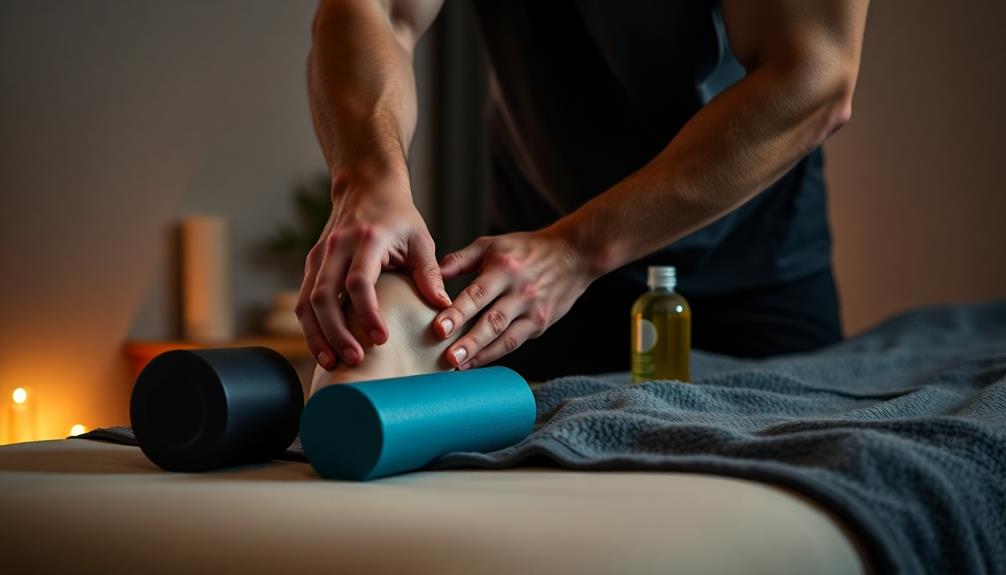
Massage and self-myofascial release can help you feel better after a tough workout. They increase blood flow, reduce muscle tension, and help you recover faster. You can get a professional massage or use tools like foam rollers and massage balls at home. Infrared heat pads can also provide warmth to sore muscles, making massage even more effective.
Here's how to do self-myofascial release:
- Pick a muscle group, like your quads or calves.
- Use a foam roller or massage ball to apply pressure.
- Slowly roll over the muscle, stopping on sore spots.
- Hold pressure for 30-60 seconds on each area.
- Take deep breaths and try to relax your muscles.
Start gently and gradually increase pressure as you get used to it. Make these techniques a regular part of your post-workout routine for best results. Over time, you should notice better flexibility and less soreness.
Epsom Salt Baths
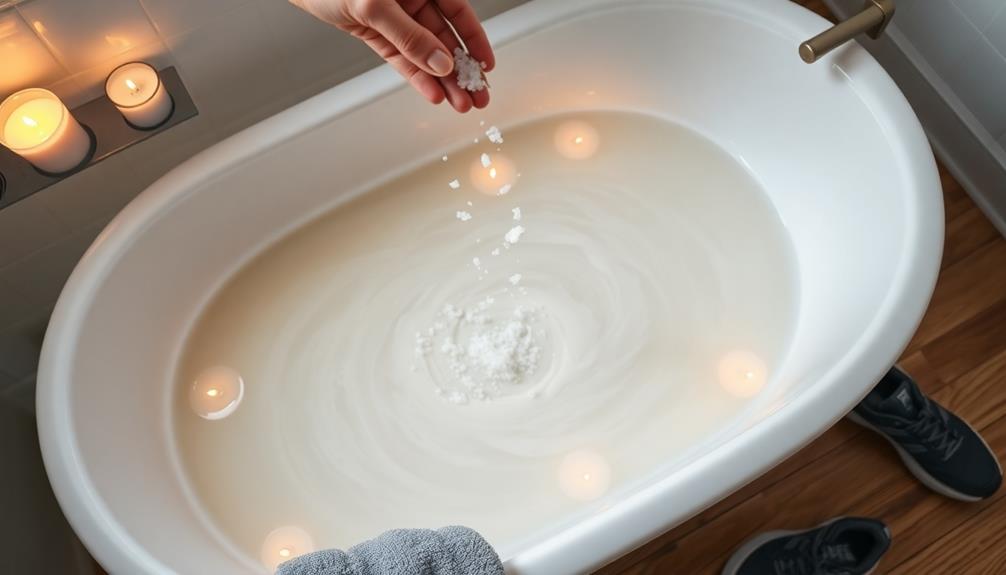
Epsom salt baths are a great way to soothe sore muscles after a tough workout. The magnesium sulfate crystals dissolve easily in warm water and can be absorbed through your skin. This helps reduce inflammation, relax tense muscles, and promote overall relaxation. For the best results, use high-quality Epsom salts made for athletes. Add 1-2 cups to a full bathtub of warm water and soak for 15-20 minutes.
Epsom salt baths offer several benefits for muscle recovery:
- Soothes aches and stiffness
- Reduces inflammation and swelling
- Boosts circulation and nutrient absorption
- Encourages better sleep and relaxation
While Epsom salt baths aren't a magic solution, they can be a helpful addition to your post-workout recovery plan. Just remember to drink plenty of water and pay attention to what your body needs.
Frequently Asked Questions
Can Over-The-Counter Pain Medications Help With Post-Workout Soreness?
Yes, over-the-counter pain medications can help with post-workout soreness. You can use NSAIDs like ibuprofen or naproxen to reduce inflammation and alleviate pain. However, don't rely on them exclusively, as they may mask underlying issues.
How Long Does Post-Workout Muscle Soreness Typically Last?
You'll typically experience post-workout muscle soreness for 24 to 72 hours. It's called delayed onset muscle soreness (DOMS). The duration can vary based on workout intensity, your fitness level, and recovery practices. It's usually harmless and subsides naturally.
Are There Specific Supplements That Can Reduce Muscle Soreness?
You can try supplements like tart cherry juice, omega-3 fatty acids, and branched-chain amino acids (BCAAs) to reduce muscle soreness. Curcumin and ginger extract may also help. Always consult a healthcare professional before starting new supplements.
Does the Type of Exercise Affect the Intensity of Post-Workout Soreness?
Yes, the type of exercise you do affects post-workout soreness intensity. Eccentric movements, like downhill running or lowering weights, typically cause more soreness. High-intensity or unfamiliar exercises also tend to result in greater muscle discomfort.
Can Alternating Hot and Cold Showers Help Alleviate Muscle Soreness?
Yes, alternating hot and cold showers can help reduce muscle soreness. You'll stimulate blood flow with heat and reduce inflammation with cold. This contrast therapy can speed up recovery and ease discomfort after your workout.

